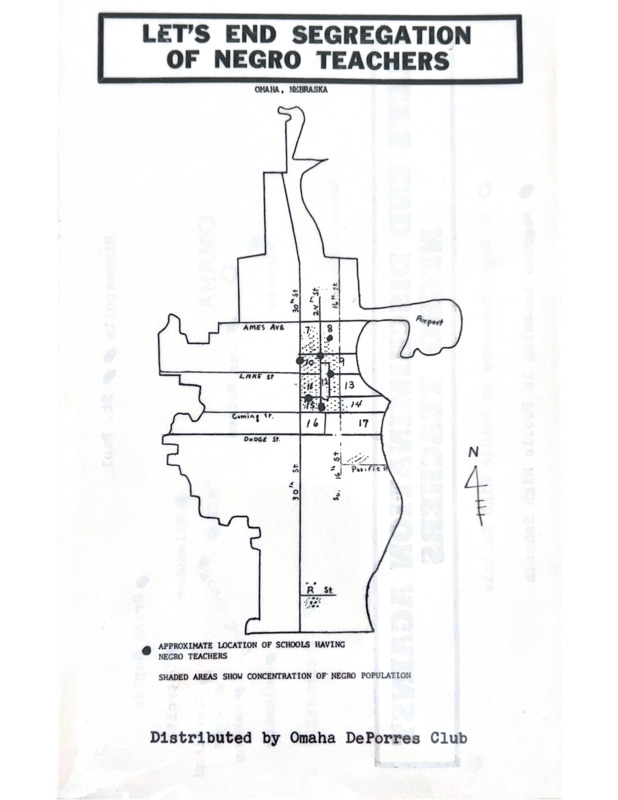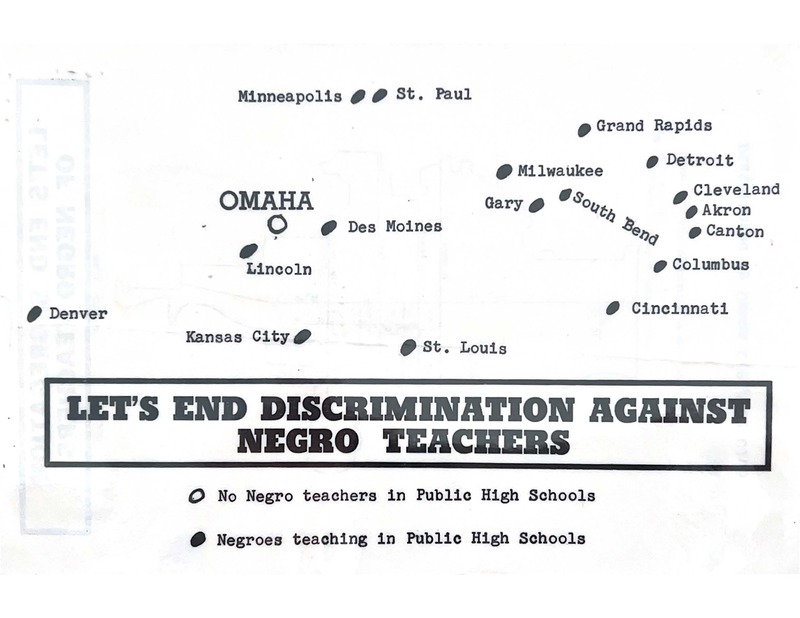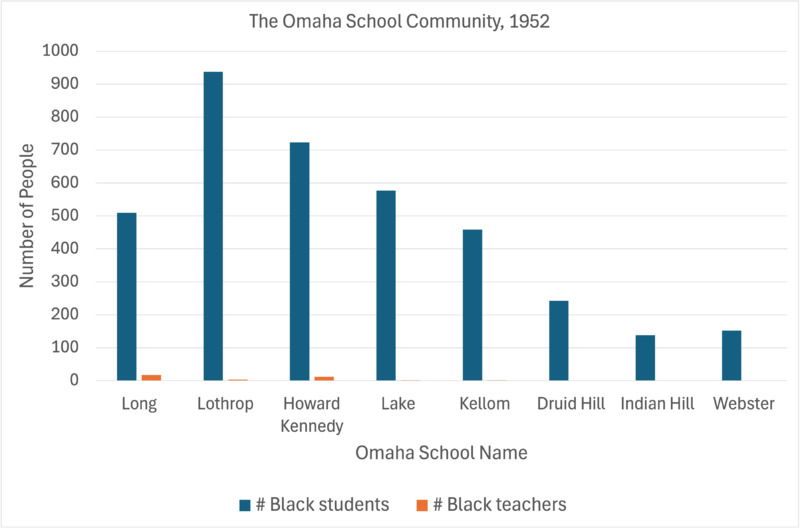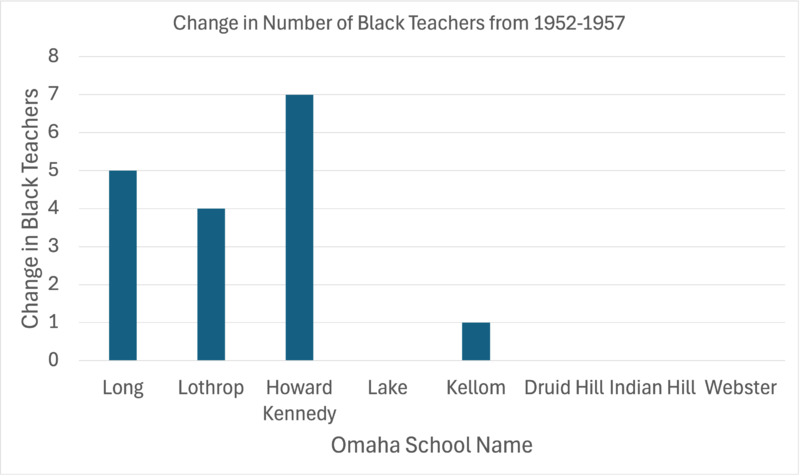Omaha Public Schools
The DePorres club assisted in campaigning to end segregation and discrimination in the employment of black teachers. As seen above, in 1959, the club handed out a handbill which compared Omaha public schools to schools in Little Rock and suggested that the city should do better to fight against segregation (Markoe Papers, B10, F10). The club then picketed at Omaha Public Schools Headquarters as they handed out the flyer. The second image (above) is another handbill used in 1960, when the De Porres club once again challenged discrimination within Omaha Public Schools. This time their flyer presented a map of Omaha indicating the areas with a disproportionate number of black students and black teachers (Markoe Papers, B10, F9). The map was used to point out discriminatory hiring practices in the school district. The final image is a map that shows cities other other than Omaha that had progressed further in hiring black teachers (Markoe Papers, B10, F9). These flyers were produced as part of the DePorres Club's campaigns to protest and to persuade the public that racial discrimination in Omaha Public Schools needed to end.
In Omaha in the 1960s, public schools had a disproportionate number of black teachers to the number of black students. The school system tried to combat the accusations by claiming they were hiring based on specific qualifications (Markoe Papers, B10, F9). One of these qualifications was examining the applicant’s family (Markoe Papers, B10, F9). However, there were a myriad of teachers who were highly qualified that were not being hired by Omaha Public Schools (Markoe Papers, B10, F7).
Omaha Public Schools did not desegregate until ordered to do so by the Federal Courts. On May 21st, 1976, the OPS approved the desegregation of schools. The Plan was a packet describing how the schools were going to slowly integrate the schools within the city of Omaha. The packet included different zones and paths for children as they moved through grades. For example, students in predominantly black neighborhoods would attend the neighborhood school until third grade and then follow the appropriate group of schools for fourth through sixth grades (Markoe Papers, B10, F7). Students in predominantly white areas would attend neighborhood school for grades K, 1, 4, 5, and 6 and for 2 or 3 they would be assigned to a primary grade center (Markoe Papers, B10, F7). Additionally, there were specialized elementary schools for kindergarten through 3rd grade.





